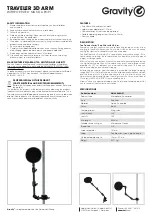
www.balluff.com
73
english
5.13 Vibration
5.13.1 Description
There are two important vibration values that we should
regularly measure on our machines:
– Total speed in [mm/s], which indicates the general
machine state (lower frequency range)
– Total acceleration in [g], which indicates the bearing
state (higher frequency range)
This secondary device function allows the measurement of
the vibration speed as a property of the physical
surroundings of a mechanical system. The primary goal is
to detect significant changes or deviations of the vibration.
Primary characteristics:
Output Value
Vibration Level
Unit
mm/s
Vibration frequency
range
10...1000 Hz
Measurement
range
1)
0…1770 mm/s
Detectable range of
the vibration
acceleration
0...16 g
Measurement error
±10%
1)
The vibration velocity range is frequency-dependent. The specified
value is the theoretical maximum within this frequency range at an
acceleration of 16 g.
Tab. 5-58: Vibration detection – Primary characteristics
5.13.2 Mathematics/Algorithm
The example in Tab. 5-59 shows a typical application of
vibration monitoring.
Application example (with vibration
frequency spectrum)
as input
Total result of the
measurement
as
output
Description
Vibration level v-RMS
[mm/s]
A classic application is the detection of the
wear of a bearing.
2.3
The spectrum and the amplitude of the
vibration change.
4.5
A more complex mechanical system (such
as a production line) returns more complex
measurement results (spectrum).
7.1
The output value is a total value for simple
handling.
Tab. 5-59: Classic application – Detection of vibration changes
5
Secondary Device Functions (continued)
BES M08EH1-L01C20B-S04G-L04 /BES M12E_1-L01C_0_-S04G-L04 /
BES M18EH1-L01C_ _ _-S04G-L04
Inductive sensors
Содержание BES M08EH1-L01C20B-S04G-L04
Страница 2: ...www balluff com ...
Страница 4: ...www balluff com ...
Страница 98: ......
Страница 100: ...www balluff com ...
















































